If Linda Rosenthal has her way, New York will be the first state to make it illegal to declaw a cat. The Manhattan assemblywoman has introduced a bill to ban the controversial procedure. Animal welfare advocates and cat lovers from around the country are taking the fight to the public.
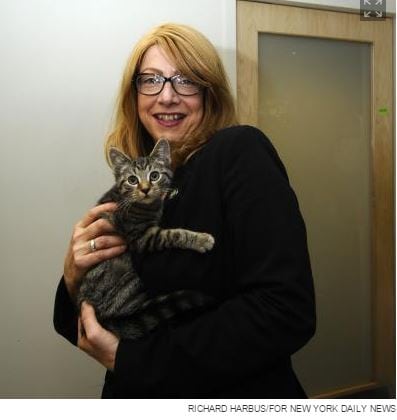
“Americans should speak out against declawing,” declares Dennis Turner, author of The Domestic Cat, who wrote an opinion piece for the New York Times in support of the proposed ban. Denver veterinarian Aubrey Lavizzo is leading a drive to make onychectomy illegal in Colorado. He calls it de-toeing. “As veterinarians, we take an oath that we will use our knowledge and skills to benefit society through the relief of pain in our animal clients. When you talk about pain in cats, it’s classified as mild, moderate and severe. Mild is a neuter. Moderate is a spay. And severe is a declaw,” he told The Denver Post.
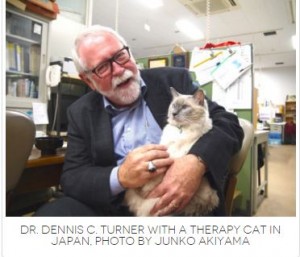
Just using the term declawing gives people the wrong impression, explains Jennifer Conrad, a veterinarian who has launched a one-woman crusade to convince the world that declawing is cruel. “Declawing is not at all declawing—it’s actually de-knuckling. If it were just the claw, it might not be so horrible. But because it’s actually the entire knuckle, the last bone in the cat’s toe, it is really an amputation. It is incredibly painful, and it does no good for the patient,” Conrad told Deep Roots Magazine.
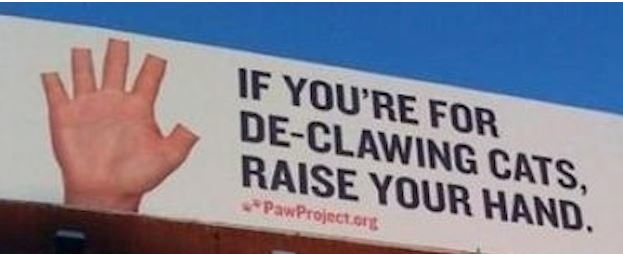
The New York declawing bill would ban the procedure unless it is done to remove a tumor or for other medical reasons. It was first introduced by Rosenthal, a champion of legislation to protect animals. Declawing or deknuckling of cats is already banned in many countries, including Australia, India, Spain and the United Kingdom, as well as seven cities in California, including Los Angeles and San Francisco. Conrad led the fight to outlaw declawing in California. She is the founder of The Paw Project and director of a 2012 documentary of the same name that examines the harmful effects of declawing on cats. The New York Times called the film “a heartfelt documentary” that “will make any cat owner, and perhaps some fellow veterinarians think twice about declawing.”

The proposal to ban declawing in New York has ignited an intense debate. While most veterinarians say declawing should be a last resort, the New York State Veterinary Medical Society argues that cat owners have a right to decide what’s best for their cats. The battle over the bill is being covered by The New York Daily News and The New York Times. “I don’t think (declawing) should be an owner’s first option, but it should be an option,” veterinarian Chris Brockett told the New York Daily News.” Brockett is immediate past president of the New York State Veterinary Medical Society, which opposes the controversial bill.
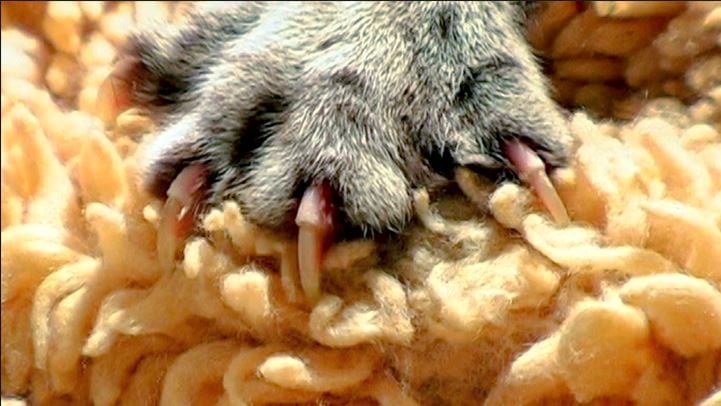
The debate has been far ranging and touches upon deeper issues, including the ongoing debate about whether cats and dogs are mere property or sentient beings entitled to protection and consideration. “Cats are not little furry people,” writes Eric Boehm of watchdog.org, who took a stand against the proposed ban. “They are not people at all, in fact. They are, harsh as it might be to hear, nothing but living, breathing property.” Not everyone agrees. “Animals are sentient beings and not simply ‘property,’” according to Turner. “It seems as if some people are willing to do anything to please their own whims, make a pet that fits perfectly into their lifestyle and disrespect the consequences of the quality of life for the animal in question.”
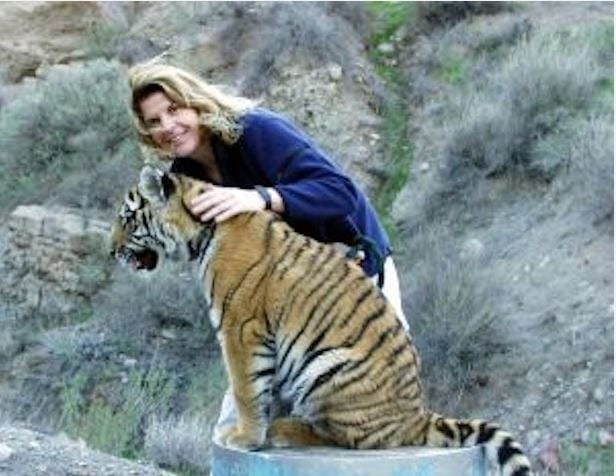
The New York Times ran four opinion pieces written by experts who take various positions summed up in the headlines for each opinion piece. Animal behaviorist Benjamin Hart says cat owners should modify behavior and “avoid declawing.” Conrad of the Paw Project argues that “declawing should be illegal, period.” The surgical procedure has its defenders. Declawing can save cats lives, argues Alan M. Beck, director of the Center for the Human Animal Bond at Purdue University’s College of Veterinary Medicine. Becks writes that declawing is a “reasonable alternative” to abandoning a cat to a shelter. But Conrad questions this line of reasoning. “If an owner is so intolerant of a cat scratching furniture, that same cat owner is not likely to be tolerant when his cat stops using the litter box because the sand hurts his amputated toe nubs.”
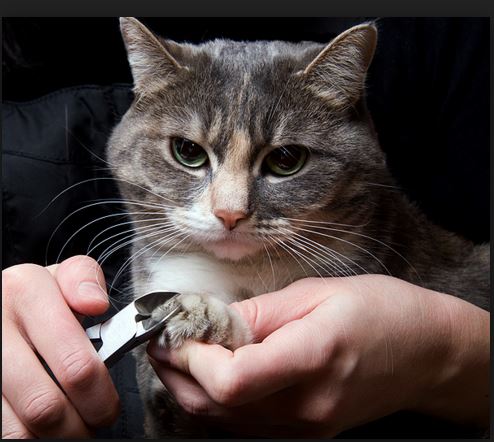
The Daily News reports that one of the sponsors of the bill is Sen. Joseph Griffo (R-Oneida County), who is allergic to cats. “Regardless of being allergic or not, he believes that animals need to be treated humanely,” Griffo spokesman Rocco LaDuca told the Daily News. Griffo agreed to sponsor the measure at the urging of a local animal-rights group that supports it, LaDuca said.
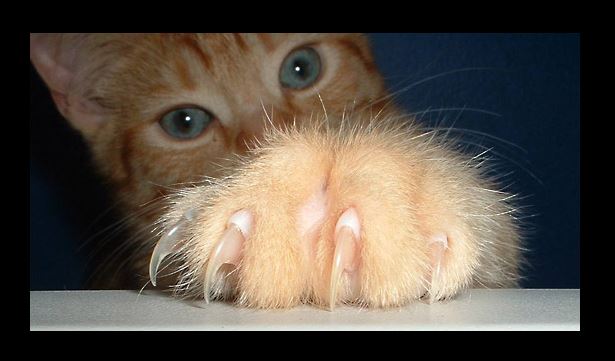
People who say declawing is a valid alternative to abandoning a cat to a shelter should realize that plenty of cats are declawed and THEN abandoned at shelters … because the painful complications of declawing can create behavioral issues such as biting and litter box avoidance. It’s easy to train cats to use a scratching post, and it’s easy to trim their claws. If you can’t do that, don’t have cats.
As a fellow veterinarian said to me not too long ago, “Declawing needs to go the way of the dodo bird.”
I declawed a few cats early in my veterinary career but it never felt right to me and I stopped doing it. As a veterinarian in private practice as well as in a shelter setting, i saw firsthand how it didn’t keep cats in their homes. Those that were returned after being declawed, came back for inappropriate urination or increased biting.
i am not alone, as more and more veterinarians are opting not to declaw at all, choosing instead to teach clients how to trim nails, encourage scratching on appropriate surgeries or, using the more humane, soft paws. Veterinary medicine needs to keep evolving and declawing is one, as Dr. Marty Becker so aptly stated, “belongs only in history books.”
Veterinary medicine could take a lesson from human medicine . It wasn’t that long ago when “9 out of 10’doctors smoked Lucky Strike cigarettes.”
Susan Whittred, DVM
Patricia H. Ladew Foundation, Inc.
Aubrey Lavizzo is a guy. Please correct that.
The AVMA will be happy to give you the excuses to perform a needless surgery and hand them several hundred dollars without fully educating you that declawing is AMPUTATION. They minimalize the pain, they don’t tell you the surgery is A FELONY in 44 countries. They dont tell you that chances are your cats claws will grow back through the pads of their feet, or that chances are you will have to have more surgery to remove bone fragments removed so they can walk, or that the cat maybe in so much pain it stops using the litter boxes and maybe starts biting. The fact is, they have no problem making tons of cash off the public’s total ignorance. There is only one reason to declaw a cat, and that’s is to make big bucks.
How many declaws does it take to buy that laser so you can do more declaws, faster? Now you can claim declaw by laser is less painful than with blade. Amputation us amputation is amputation. Unnecessary pain in inhumane no matter how you slice it or what your excuse for inflicting it.
After 36 years of rescue work hundreds of bites and scratches, I can vouch that Cat Scratch Fever (CSF) has NEVER been an issue with anyone I know in the rescue business yet it is played up as a SCARY serious threat. Gee, fuuny that none of the 44 countries that ban declaw are running rampant with CSF.
Declawing does not keep cats in hoes, they shouldn’t be in homes where declawing is considered to begin with. If you use have declawed cat the shelters are full of them. Petfinder.com. search your zip with declaw parameter to prove the myth WRONG.
Thank God for the precious few vets who realize we have raised our standards and, if they want our business, they must also.
The #AVMAMyths are #Lies
#AVMAHATESCATS
#neverdeclawyourcat
#ScreamingMemeeesAgainstDeclaw #CityTheKity #PawProject
Petfinder.com will give you some numbers, but remember that hey don’t even begin to address the declawed cats tossed out doors for litter box issues.
Just search your zip with declaw parameter.
You know, the posts that really get to me are the ones who say things like “they were putting holes in my bedspread” or “He went right up the blinds so we had him declawed.” I mean, how can people so calmly state they had their cats’ toes cut off because of a bedspread?
Instead of eagerly cutting off the cat’s toes, why didn’t their vet say “oh no, this isn’t necessary at all. Put the bedspread (or blinds) away for a few months and train the kitten or cat when and where to use her claws.”
This is done by providing kitty with a variety of scratching surfaces. Cats have a lot of different preferences. Put them in any room kitty spends a lot of time, especially near favorite sleeping spots.
Use the scratchers when you play with kitty. Daily play time exercises kitty’s body and mind, which prevents boredom. The more YOU play with your cat, the more she will play on her own–instead of digging holes in the rug. This is what people in the rest of the world do, with their cats.
Cats have many different preferences (in scratching surfaces). I should add that, it is important to pay attention and learn what the cat prefers. This is imperative in a successful training.
This is also important during play sessions. If you pay close attention, your cat gives many clues about what she likes and doesn’t, and how she wants you to play the game. The more attention that is paid to those clues, the more satisfying the play session is for every one.
THAT is what creates a “better bond between human and cat,” not “declawing” (amputation of the first toe digits), as still too many vets are advertising.
Once kitty is grown up, and is trained to use and jump and play on her own things, you can put your bedspread back out.
That is what vets should be saying.
I wish it were illegal in the US. Being an apartment dweller and a cat mom, I feel stuck where I am right now. Some apartment complexes around where I live only allow declawed cats. So, if I want to move I would have to have my adult cats mutilated.
Tell me. Do you believe in neutering and fixing your cats? Sorry, but as someone who has found homes for more than 350 stray cats so far in my life, I have to say I absolutely do not understand how we are all for “mutilating” cats by removing their reproductive organs but not for declawing them which is far, far less invasive and has far, far less likelihood of long-term health consequences. There is obviously a good reason for fixing cats (and dogs) and I know all about the health benefits we are told are bestowed on fixed animals, but we are deluding ourselves if we want to believe that there are no negative health effects from removing the natural production of sexual hormones, especially at a young age.
I also don’t agree that there are few people who return cats because of destruction of furniture. That is one of the key reasons I have had people come to me to give up their cats. My mother was someone who was always kind to animals, but she had never had a cat before, and after a relative brought a kitten to us in my youth, my mom thought she would give a cat a try (being predominantly a dog lover). Soon, the cat’s penchant for scratching the furniture became apparent (and yes, we did all the training and scratching post stuff), my mom locked our poor cat into a bathroom during the days when we were out. This was only a temporary measure because my mom couldn’t of course stand to lock her in there, and so she told the relative who had given her to us, to take her back and figure out what to do with her.
Today, I have a house full of cats. I have scratching posts everywhere and we have to pick our furniture, keeping in mind what may or may not be attractive to the cats to scratch. I am an extremely tolerant cat-mom, and we are always taking in strays. I spend thousands for their vet bills, and never give up on them, no matter what is wrong with them. But I prefer my cats declawed, as no matter what I do, they continue to scratch the furniture and over time, ruin it.
No one is in any position to lecture to me about being an animal lover. Not only have I opened my heart, my home and my wallet freely over the years to many many cats – most of whom have had series medical conditions which I have treated. Done properly (and my vet is terrific), there may be some slight tenderness for a day at most. I have only had one cat have a bad outcome from the surgery, and unfortunately, I think it had more to do with the new-fangled method of not using a stitch to close the end of the toe and to just have glue or pressure from a bandage.
In any event, I dealt with cases of many women having been given hysterectomies when they were not needed or there were other options available. When I looked into the long-term effects on these women, they were things like premature aging. I find it hard to believe that this would be the effect in humans, but not in animals. Removing sexual hormone production prematurely results in a failure to develop properly, and those same hormones are responsible for things like keeping skin supple, body fitness etc. Think of what happens to postmenopausal women. If you bring on that state prematurely by removing sexual hormones early, you bring on the postmenopausal problems early as well.
Obviously as a society we have decided that this is tolerable and acceptable to us, because of the huge problem of over population of animals. But let’s not kid ourselves. We surely AREN’T doing it for the wellbeing of that individual animal, and we surely aren’t acknowledging that autonomy and rights of the animals we do this to. I seriously seriously doubt any animal who could signal their preference, would want to undergo such a procedure if they had a vote.